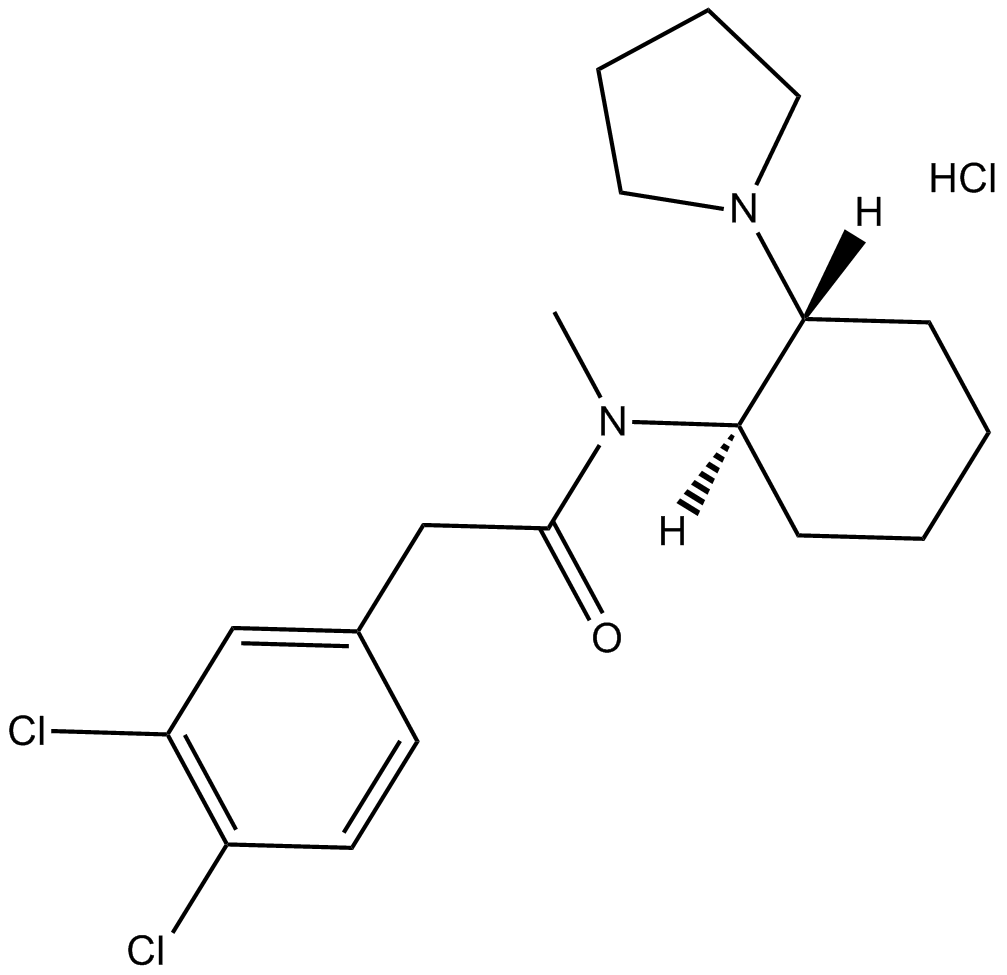(-)-U-50488 hydrochloride (Synonyms: (-)-Trans-(1S,2S)-U-50488 hydrochloride) |
| Katalog-Nr.GC15944 |
κ-opioid receptor agonist, selective
Products are for research use only. Not for human use. We do not sell to patients.

Cas No.: 114528-79-9
Sample solution is provided at 25 µL, 10mM.
(-)-U-50488 hydrochloride is a selective agonist for κ-opioid receptor [1].
The κ-opioid receptor (KOR) is a type of opioid receptor for opioid peptide dynorphin and controls addiction. Also, KOR plays an important role in stress, anxiety, anhedonia, depression and increased drug-seeking behavior.
(-)-U-50488 hydrochloride is a selective KOR agonist [1]. In isolated rat DRG neurons, U-50488 (0.3-40 μM) inhibited voltage-independent Ca2+ channel currents. In HeLa cells that didn’t express KOR, U-50488 (20 μM) blocked Ca2+ channels [2].
In rhesus monkeys, U-50488 exhibited potent antinociceptive activity and produced diuresis [1]. U-50488 enhanced contraction of the rabbit vas deferens induced by electrically with IC50 value of 26.5 nM. In mice, U-50488 impaired motor function with ED50 value of 15.3 mg/kg and reduced spontaneous activity [3]. In adult rats, U-50488 increased the threshold required to maintain self-stimulation responding, a depressive-like effect. While, males were significantly more sensitive than females to the threshold-increasing effects [4].
References:
[1]. Tang AH, Collins RJ. Behavioral effects of a novel kappa opioid analgesic, U-50488, in rats and rhesus monkeys. Psychopharmacology (Berl), 1985, 85(3): 309-314.
[2]. Hassan B, Ruiz-Velasco V. The κ-opioid receptor agonist U-50488 blocks Ca2+ channels in a voltage- and G protein-independent manner in sensory neurons. Reg Anesth Pain Med, 2013, 38(1): 21-27.
[3]. Lu SN, Ma SC, Zhang KG, et al. Comparison of pharmacological profile of selective kappa-opioid agonist K-II and U-50488. Yao Xue Xue Bao, 1991, 26(3): 171-174.
[4]. Russell SE, Rachlin AB, Smith KL, et al. Sex differences in sensitivity to the depressive-like effects of the kappa opioid receptor agonist U-50488 in rats. Biol Psychiatry, 2014, 76(3): 213-222.
Average Rating: 5 (Based on Reviews and 30 reference(s) in Google Scholar.)
GLPBIO products are for RESEARCH USE ONLY. Please make sure your review or question is research based.
Required fields are marked with *




















